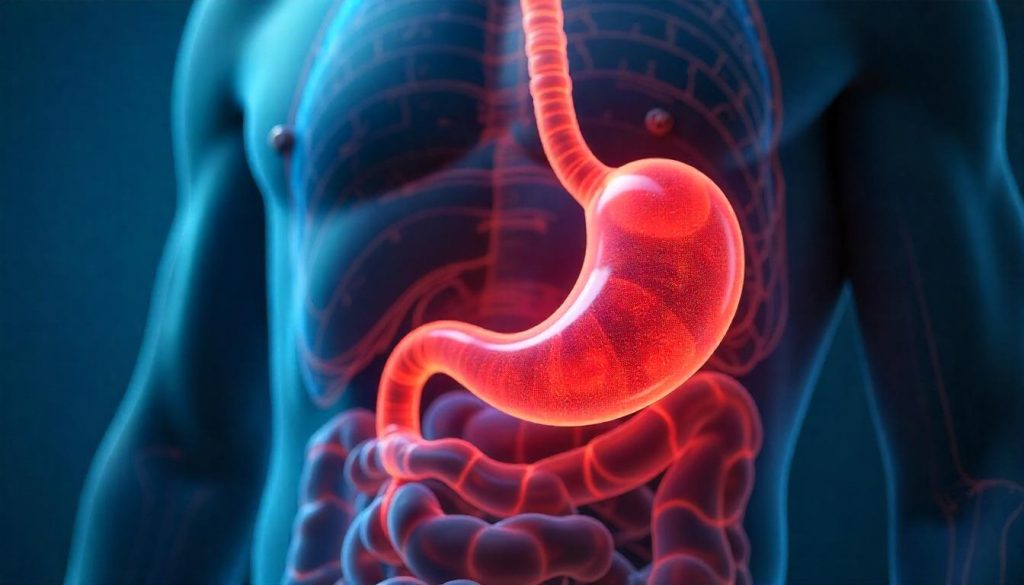Upper GI Bleeding
- Home
- Specialities
- Critical Care
- Upper GI Bleeding

Overview
Gastrointestinal bleeding is when there is blood loss from any of the several organs included in your digestive system. It can occur from any part of the GI tract that runs from your mouth to anus.
What are the types of GI bleeds?
- Acute: Sudden, severe bleeding that’s a sign of a medical emergency.
- Chronic: Bleeding that comes and goes over a long time.
- Occult: Bleeding is not visible as it is microscopic, but you can see signs of GI blood loss (such as low blood counts) on laboratory testing.
- Overt: Visible signs of a GI bleed, including abnormal colors or substances in your feces (poop). You may also vomit blood.
- Obscure: When standard endoscopy testing does not reveal a source of GI bleeding.
Symptoms and Causes
What causes an upper GI bleed?
Issues affecting the upper GI area that can cause bleeding include:
- Crohn’s disease.
- Esophageal cancer.
- Esophageal varices.
- Esophagitis.
- Gastritis.
- Gastrointestinal stromal tumor (GIST).
- GERD (Chronic Acid Reflux).
- Liver cancer.
- Pancreatic cancer.
- Peptic ulcers.
- Stomach cancer.
What causes a lower GI bleed?
Issues affecting the lower GI area that can cause bleeding include:
- Anal cancer.
- Anal fissures.
- Colon polyps.
- Colorectal cancer.
- Crohn’s disease.
- Diverticulitis and diverticulosis.
- Gastrointestinal stromal tumor (GIST).
- Hemorrhoids.
- Rectal ulcers.
- Ulcerative colitis.
What are the symptoms of a GI bleed?
GI bleed symptoms depend on the source and how severe it is.
You may experience:
- Abdominal cramping.
- Dark-colored poop or regular-colored poop with blood in it.
- Pale appearance.
- Shortness of breath (dyspnea).
- Tiredness
- Vomit with blood in it or a substance that looks like coffee grounds.
- Weakness and fatigue.
What types of testing might I need?
Initial steps may include:
- Blood tests check for signs of GI bleeds, such as anemia, using a sample of your blood.
- Fecal occult blood test (FOBT) is a lab test that checks for signs of blood in a poop sample.
- CT scan is a sophisticated imaging study that uses technology to produce 3D, enhanced views of your intestines.
- GI X-rays take images of your upper or lower digestive tract to check for signs of a bleed or other conditions. The tests use a barium contrast solution that makes it easier to see the digestive tract on the X-ray.
- Upper endoscopy is a procedure to examine symptoms of an upper GI bleed. It uses a long tube with a camera and light at the tip (endoscope).
- Balloon enteroscopyis like an endoscopy. It uses long tubes and a camera. Tiny balloons at the endoscope tip inflate to help providers examine hard-to-reach small bowel.
- Colonoscopy or sigmoidoscopy is a procedure to examine signs of a lower GI bleed. The test uses endoscopes that are passed through the anus.
What is the outlook for people who have had a GI bleed?
Most people make a full recovery. It can take your intestines a few months to heal. You can lower the risk of future bleeds by making lifestyle changes, such as:
- Avoiding medications that can provoke bleeding if possible.
- Treating causes of ulcers, like helicobacter pylori infections.
- Reducing stress, which may involve relaxation techniques, like deep breathing.
- Maintaining an active lifestyle and balanced diet, so you achieve a healthy weight.
Our Team
Doctor Name
Degree, Speciality
Doctor Name
Degree, Speciality
Are you having health problems? Contact us today!
Mail: info@aykaihospital.com
Call Us 24/7: 0161-525 25 25
Call Us 24/7: 0161-525 25 25

